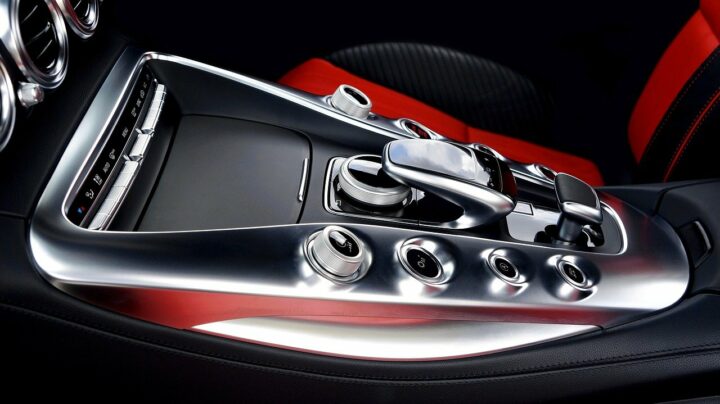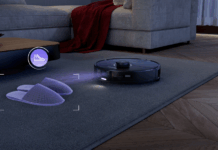 We all know that there are some tech gadgets that we just can’t live without. But what about the ones that we think are indispensable and might be a huge liability? In this blog post, I’ll take a look at the tech most likely to fail in your car and provide some tips for avoiding disaster. One way to avoid disaster is to evaluate the repair cost in comparison to CARCHEX costs. While an extended car warranty may be expensive, little repairs add up over time.
We all know that there are some tech gadgets that we just can’t live without. But what about the ones that we think are indispensable and might be a huge liability? In this blog post, I’ll take a look at the tech most likely to fail in your car and provide some tips for avoiding disaster. One way to avoid disaster is to evaluate the repair cost in comparison to CARCHEX costs. While an extended car warranty may be expensive, little repairs add up over time.
Your car’s infotainment system
No one likes being stranded on the side of the road with a broken-down car. And while most mechanical issues can be resolved with a little elbow grease (or a tow to the nearest repair shop), there is one type of failure that is increasingly difficult to fix: infotainment system glitches.
As cars become more and more reliant on technology, it’s no surprise that their in-dash entertainment systems are becoming increasingly complex—and prone to failure.
Whether it’s a navigation system that refuses to recalculate your route or an audio system that cuts out at random, infotainment system failures can be frustrating (and expensive) to repair. So if you’re looking for a little peace of mind on your next road trip, be sure to keep an eye on your car’s infotainment system—it just might be the most important tech in your vehicle.
Your car’s keyless entry and start
Chances are if you own a car that was made in the last decade or so, it likely has keyless entry and start. And while this technology is certainly convenient, it’s also one of the most likely to fail.
Repair costs for keyless entry and start systems can be quite high. And since this technology is still relatively new, many mechanics may not be familiar with it. As a result, they may charge you a premium for repairs. So if you’re thinking about buying a car with keyless entry and start, be aware that you may be facing some expensive repairs down the road.
Your car’s rear-view camera
RepairPal is an estimated repair cost website that provides RepairPal certified shops. According to RepairPal, the average cost for a rear-view camera replacement is between $169 and $211. RepairPal also states that depending on the year, make, and model of your car, rear-view camera repairs can be as low as $140 or as high as $230.
The most common symptom of a failing rear-view camera is a black screen or no image at all when the car is in reverse. Other symptoms may include a fuzzy image, poor Night Vision, or water spots on the lens. If you notice any of these symptoms, it’s important to take your car to a RepairPal Certified shop to get an estimate for repairs. Waiting to get your rear-view camera fixed can result in costly repairs down the line.
Your car’s tire pressure monitoring system
If you’re like most drivers, you probably don’t give much thought to your car’s tire pressure monitoring system (TPMS). But TPMS is an important safety feature, and if it fails, it can leave you stranded on the side of the road.
There are two types of TPMS: direct TPMS and indirect TPMS. Direct TPMS uses sensors to measure the air pressure in your tires. Indirect TPMS uses your car’s ABS system to estimate tire pressure. Most newer cars have direct TPMS, but some older cars have indirect TPMS.
If your TPMS light comes on, it means there’s a problem with the system. The most common cause of TPMS failure is a flat tire. If you have a flat tire, the TPMS sensor will be damaged and will need to be replaced. Other causes of TPMS failure include a dead battery, a faulty sensor, or damage to the TPMS antenna.
If your TPMS light comes on, it’s important to get the system checked out as soon as possible. A TPMS failure can leave you stranded on the side of the road, so it’s best to be safe and have the system checked by a professional.
Your car’s lane departure warning system
 As lane departure warning systems become increasingly common in new cars, it’s important to understand how they work and what to do if they fail. Lane departure warnings are designed to help keep drivers safe by alerting them when their car starts to drift out of their lane. However, these systems are not perfect, and they can sometimes fail.
As lane departure warning systems become increasingly common in new cars, it’s important to understand how they work and what to do if they fail. Lane departure warnings are designed to help keep drivers safe by alerting them when their car starts to drift out of their lane. However, these systems are not perfect, and they can sometimes fail.
If your lane departure warning system fails, the first thing you should do is check the manual to see if there are any specific instructions on how to deal with the problem. In most cases, you will be able to continue driving safely without the system, but you should use extra caution and be prepared to take evasive action if necessary. lane departure warning systems are a valuable safety feature, but they should not be relied upon completely. Drivers must always remain aware of their surroundings and be ready to take control of the situation if necessary.
Your car’s blind spot detection system
We’ve all been there. You’re driving along, minding your own business, when suddenly you realize you’re in someone else’s blind spot. It’s a scary feeling, especially if they’re coming up on you quickly. Even with your mirrors properly adjusted, blind spots are inevitable. But thankfully, many new cars come equipped with blind-spot detection systems.
These handy features use sensors to detect when someone is in your blind spot and then warn you with a visual or auditory cue. However, like any other system in your car, the blind spot detection system can eventually fail. If you notice that it’s not working as well as it used to, or if it stops working altogether, be sure to take it to your mechanic for a checkup. In the meantime, be extra vigilant about checking your blind spots before changing lanes.
While we can’t predict when every piece of technology in our cars will fail, there are a few that are more likely to give us trouble. By being aware of these tech gadgets and their potential problems, we can take steps to avoid disaster.


















